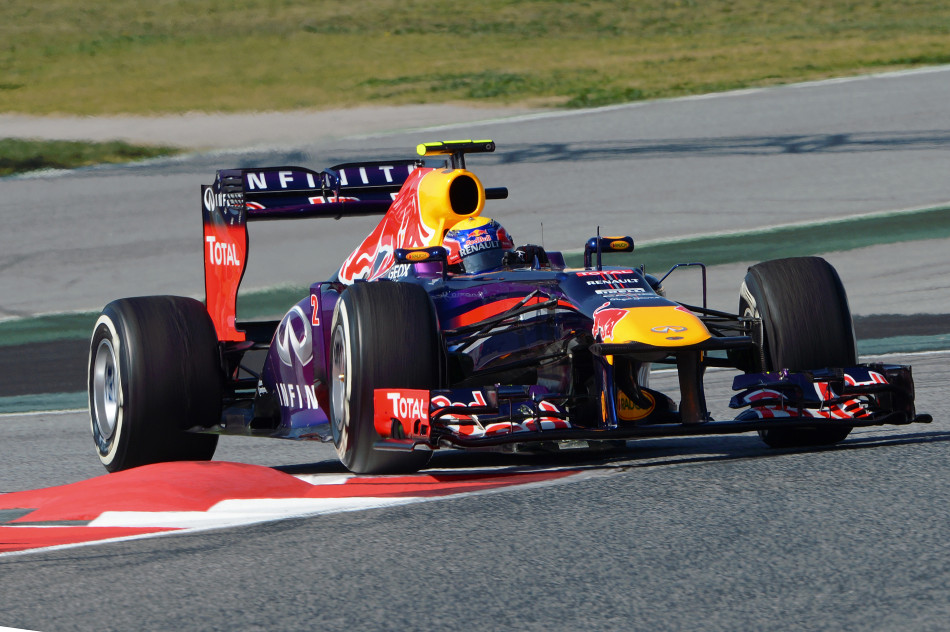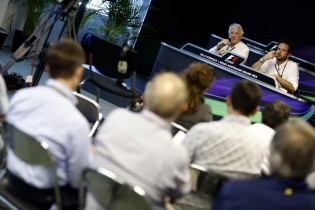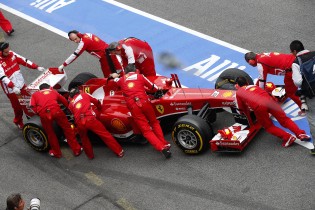Small change: F1’s 2013 technical tweaks

With significant changes to the Formula One Technical Regulations coming in 2014, the 2013 car launch mantra has been ‘evolution, not revolution’. The biggest differences this season are the introduction of restrictions to the use of DRS during practice and qualifying, and to the tyre compounds supplied by Pirelli.
Since their F1 return in 2011, Pirelli’s mission has been to shake up the action on track by keeping the teams on their toes. Aggressive compounds, high levels of degradation, and a variable number of pit stops have been the name of the game, and 2013 is no different, barring an increase in weight that has led to an overall increase in the weight and balance of the cars.
According to Pirelli Motorsport Director Paul Hembery, the 2013 tyre compounds “were developed over the course of the last season in private testing and they are the most focussed and performance-orientated tyres we have ever made. Cold weather conditions during pre-season testing meant that we weren’t able to showcase them to the best of their abilities, but we are expecting a different story in Albert Park, with two to three pit stops per car.


“The start of any new season is always a very exciting time and from what we have observed during pre-season testing the field seems to be closer than ever: quite an achievement when you consider that we had seven different winners from the first seven races last year. All the compounds and constructions have changed for 2013, and the drivers should notice a wider working range and a bigger window of peak performance. The performance gaps between the compounds are also larger, which means that teams have a greater opportunity to use strategy to their advantage by exploiting the consequent speed differentials.”
That close field will be tightened further still by restrictions to the use of DRS that the FIA explained in full last autumn.
“We are going to prohibit the use of DRS in qualifying and practice, except at the places it is going to be used in the race,” FIA Race Director Charlie Whiting told the F1 press corps at last year’s Austin race. “That’s something we told the teams about the other day and it's something we are going to do for safety reasons.


“The whole point of the DRS was to improve overtaking in the race – that’s the sole and stated reason for it – and we didn’t really want to have it used in qualifying and practice before but we were rather worried we may not have an effective DRS,” Whiting said. “Now I believe with all the information we have, we should not see any reduction in the power of the DRS. I think teams will still use because even though they’ll only be allowed to use it in say two sections, the benefit will still be there for them. I’m sure it will work just as it does now.
“There are circuits like Melbourne or Silverstone where the DRS doesn’t work particularly well because there’s not a long enough straight,” he concluded. “But on other circuits if the DRS does become a little less effective then we can make the DRS zones longer. Overall it won’t really change the effectiveness of the DRS, which was not how we felt based on what the teams were telling us when we introduced it. But we want to stop it because we are concerned about the high number of incidents reported to us by the drivers.”
Teams have been given the option of using vanity panels to disguise 2012’s unpopular stepped noses, and a quick glance along the pit lane shows that a variety of solutions have been adopted, from full coverage panels to a reduction in the gradient of the step. Also affecting the front end of the car are more stringent front wing deflection tests, designed to combat 2012’s dramatic flexing.
Following penalties for Lewis Hamilton and Sebastian Vettel in 2012, teams will no longer be able to claim exemption on the grounds of force majeur should their car stop on track in qualifying. Any cars that do stop on track will need to have enough fuel to return to the pits in addition to the one-litre sample required by the FIA.

 Facebook
Facebook Twitter
Twitter






